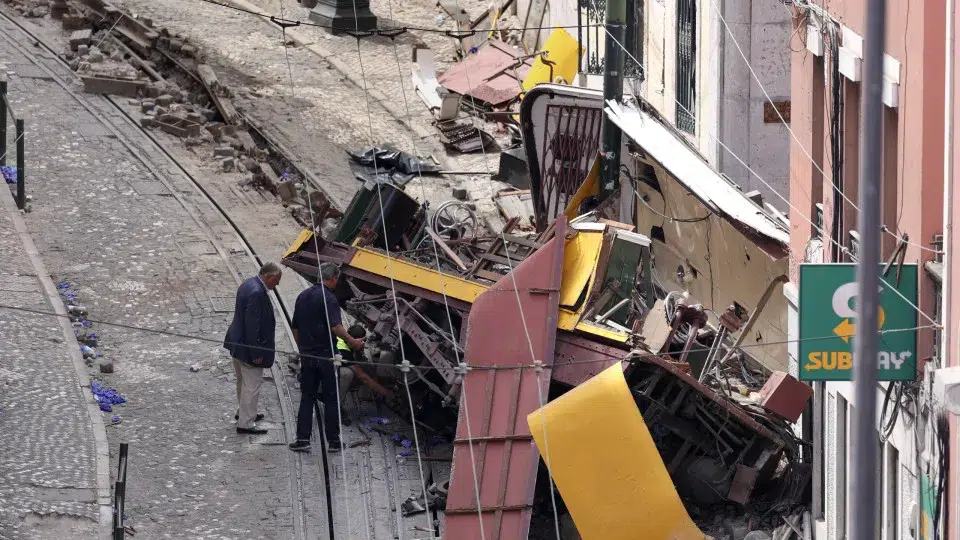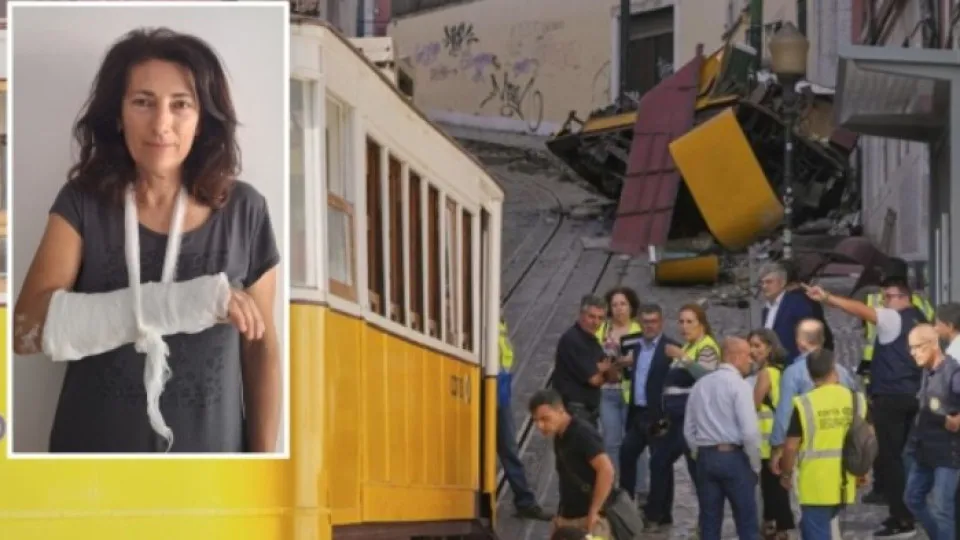
The Information Note from the Office of Prevention and Investigation of Aircraft Accidents and Rail Accidents (GPIAAF), published today, estimates that the collision of the Glória elevator carriage in Lisbon against a building occurred at “a speed of around 60” kilometers per hour, with the entire event taking “less than 50 seconds”.
The GPIAAF notes that the Glória elevator travels 276 meters, overcomes a height difference of 45 meters, with an average inclination of 18%, with its “maximum operating speed” being 11.5 kilometers per hour, taking just over a minute to complete the journey.
It is composed of two vehicles, known as “cabins” and numbered 1 and 2, each with an unladen weight of around 14 tons and a capacity for 42 people, 22 of whom are seated and the rest standing, in addition to the driver (‘brakeman’).
The Glória elevator, classified as a national monument, in its current typology and configuration dates back to 1914, although over these 111 years it has undergone various conservation and improvement interventions, as well as periodic maintenance defined for each moment.
Regarding the timeline of the accident, the GPIAAF reports that at 18:00 on Wednesday, September 3, the elevator had its cabins parked at both stations: no. 1 at the top of Calçada da Glória and no. 2 at the bottom, near Praça dos Restauradores, boarding passengers.
The Information Note states that “at this stage of the investigation, the exact number of people in each vehicle is not yet unequivocally determined, with the brakemen controlling the capacity according to the maximum allowed occupancy”.
The GPIAAF notes that “around 18:03, after the usual coordination procedures between the respective brakemen, the cabins begin their journey”.
“Moments after starting the movement and when they would not have traveled more than about six meters, the cabins suddenly lose the balance force guaranteed by the cable connecting them,” explains the agency.
According to the GPIAAF, “cabin no. 2 abruptly reverses, with its movement halted about 10 meters later by its partial exit beyond the end of the railway and burying its balance weight at the bottom of the trench at the cable’s end”.
“Meanwhile, cabin no. 1, at the top of Calçada da Glória, continues its downward movement, increasing its speed. Immediately, the brakeman of the vehicle engaged the pneumatic brake as well as the manual brake in an attempt to stop the movement. These actions were ineffective in stopping or reducing the vehicle’s speed as the cabin continued accelerating down the slope,” the investigation reveals.
About 170 meters after starting its journey, at the beginning of the right curve that the Calçada alignment presents at its final part, “the vehicle, due to speed, derails and begins to tilt to the left in the direction of travel”.
“However, the forces developed eventually rip it off the pavement, and the vehicle completely loses its guidance, impacting laterally the upper part of the cabin against the wall of an existing building on the left side of the Calçada, which initiated the destruction of the wooden box and then frontally against a streetlight post and another supporting the electric overhead line of the elevator,” the Information Note states.
The GPIAAF says that the two posts, both made of cast iron, “caused very significant damage to the box”, adding that the cabin ended “shortly after its uncontrolled movement against the corner of another building”.
“It is estimated, with a non-negligible margin of uncertainty due to the unknown parameters, that the first impact occurred at a speed of around 60 km/h, with all events taking place in less than 50 seconds,” the Information Note mentions.




